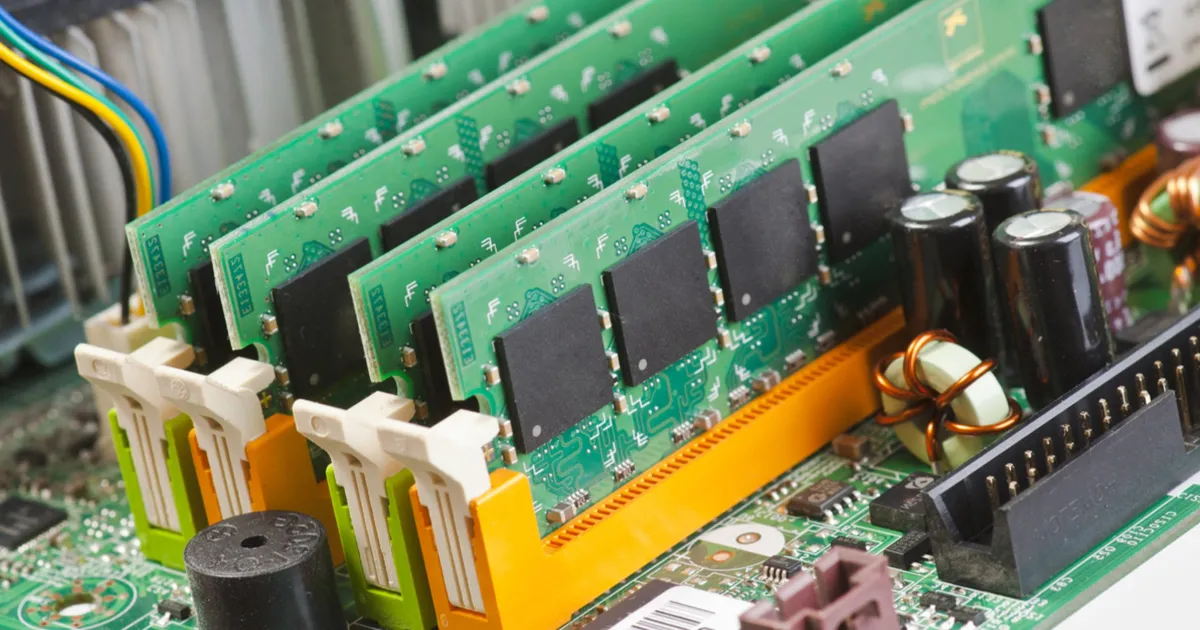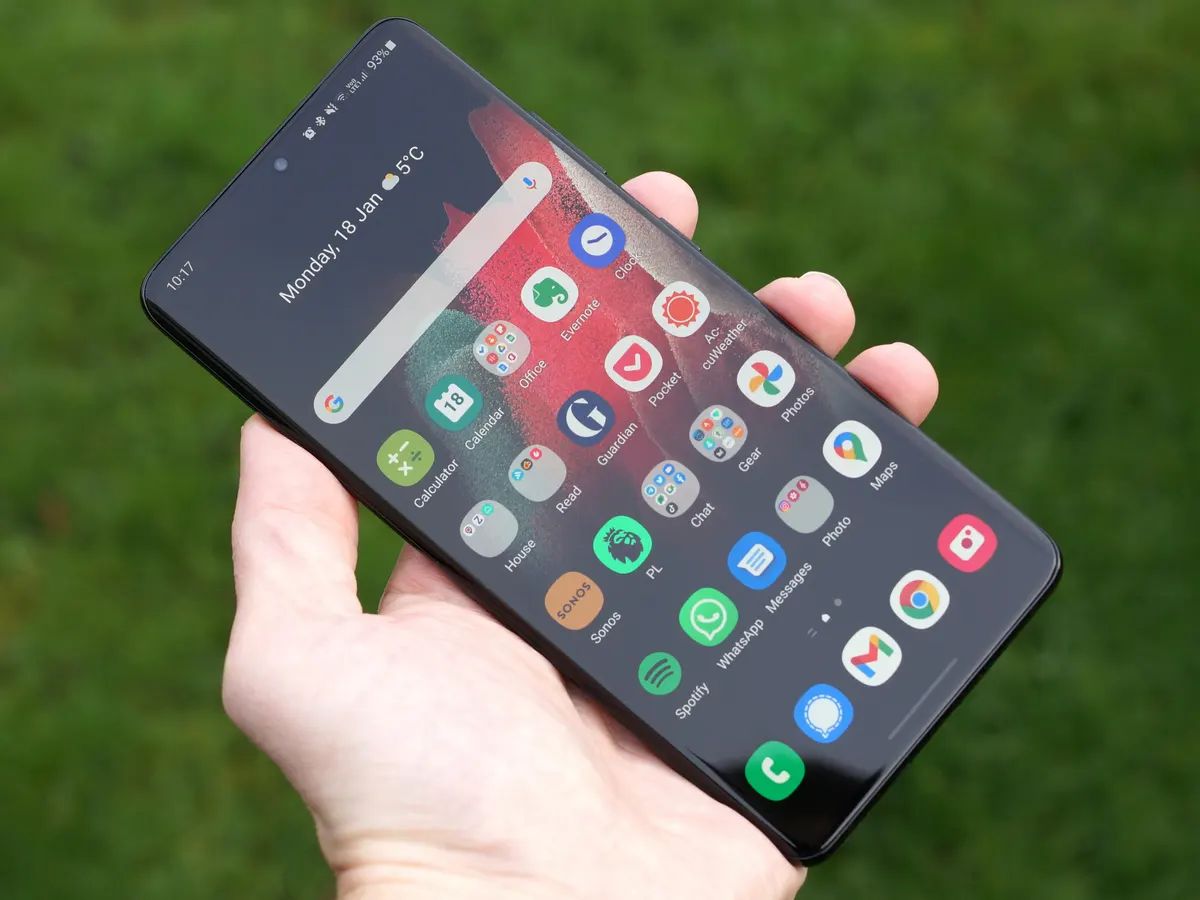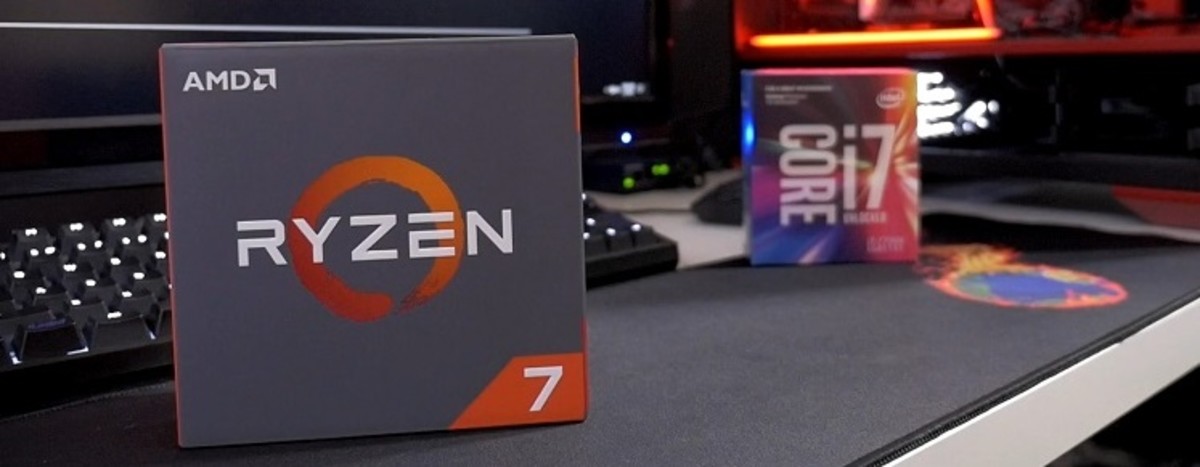Introduction
Welcome to the world of smartphone processors, where power and speed are the driving forces behind cutting-edge technology. In today’s fast-paced world, having a smartphone with a top-performing processor is crucial for a seamless user experience. From gaming and multitasking to browsing the internet and streaming videos, the processing power of a smartphone plays a vital role in determining its overall performance.
So, what exactly is a smartphone processor? In simple terms, it is the brain of your device, responsible for executing commands and calculations that enable you to use various applications and features. Think of it as the engine of a car that powers all its functions.
When it comes to smartphones, processor speed is a crucial factor that many tech enthusiasts and users consider before making a purchase. The faster the processor, the smoother the performance and the better the user experience.
But why is processor speed so important? Well, imagine you’re trying to navigate through your favorite apps, switch between them effortlessly, and enjoy graphics-intensive games without any lag or stuttering. All of these tasks require significant processing power to handle the complex algorithms and calculations in real-time.
Factors such as app loading times, smooth multitasking, and faster data processing are directly influenced by the speed and efficiency of the smartphone processor. A high-performing processor not only enhances your overall user experience but also ensures that your device can handle resource-hungry tasks with ease.
Now that we understand the importance of processor speed in smartphones, let’s take a closer look at the factors that affect smartphone processor performance. By understanding these factors, we can better appreciate the technology behind the fastest smartphone processors available in the market today.
What is a smartphone processor?
A smartphone processor, also known as a central processing unit (CPU), is the key component that handles all the computational tasks in a smartphone. It acts as the brain of the device, executing instructions and performing calculations at incredible speeds.
A smartphone processor is a highly complex integrated circuit that consists of multiple cores, each capable of handling multiple threads simultaneously. These cores are responsible for executing the instructions of various applications and tasks, allowing the smartphone to perform tasks efficiently.
The speed and performance of a smartphone processor are measured in terms of clock speed, measured in gigahertz (GHz), and the number of cores it possesses. Higher clock speed and more cores generally result in faster processing and better multitasking capabilities.
Modern smartphone processors are designed to handle a wide range of tasks, including gaming, streaming videos, web browsing, and running multiple apps simultaneously. They are equipped with advanced technologies and architectures that optimize performance, power efficiency, and heat management.
The architecture of a smartphone processor plays a crucial role in its overall performance. Different manufacturers use their own architectures, such as ARM, Apple’s custom architecture, or Snapdragon custom cores. Each architecture offers unique advantages in terms of performance and power efficiency.
In addition to the processing power, smartphone processors also include other components such as a graphics processing unit (GPU), image signal processor (ISP), and neural processing unit (NPU). These components are specifically designed to handle tasks related to graphics rendering, photography, and artificial intelligence.
Smartphone processors have come a long way in terms of performance and efficiency. They have undergone significant innovations to meet the increasing demands of users and the advancements in technology. Manufacturers constantly strive to develop faster and more power-efficient processors to provide users with an exceptional smartphone experience.
Why is processor speed important?
The speed of a smartphone processor plays a crucial role in determining the overall performance and user experience. Here are a few important reasons why processor speed is so important:
1. Seamless Multitasking: With a fast processor, you can seamlessly switch between multiple apps and tasks without experiencing any lag or slowdown. Whether you’re browsing the web, streaming videos, or playing games, a powerful processor ensures smooth multitasking capabilities, allowing you to enjoy a seamless user experience.
2. Faster App Loading Times: A fast processor significantly reduces app loading times. Whether you’re launching a gaming app or a productivity tool, a speedy processor ensures that apps open quickly, allowing you to access your desired content or functionality without delays.
3. Smooth Gaming Performance: Gaming on smartphones has become increasingly popular, and a fast processor is essential to ensure smooth gameplay. The processing power is responsible for rendering graphics, physics simulations, and handling complex calculations in real-time. A high-performing processor ensures that you can play graphics-intensive games without any lag, stutter, or dropped frames.
4. Enhanced Web Browsing Experience: Browsing the internet involves loading and rendering web pages, which can be resource-intensive. A fast processor enables speedy webpage loading and smooth scrolling, making your browsing experience faster and more enjoyable.
5. Efficient Data Processing: From encoding and decoding media files to handling large datasets, a powerful processor can perform data processing tasks more efficiently. This is especially important for content creators, video editors, and professionals who work with data-intensive applications.
6. Quick Response Times: A fast processor ensures quick response times when touching the screen or executing commands. Whether you’re navigating through the user interface or typing a message, a snappy processor contributes to a responsive and fluid user experience.
7. Future-Proofing: Investing in a smartphone with a fast processor ensures that your device can handle future software updates, emerging technologies, and advanced applications. A powerful processor provides longevity and ensures that your device remains relevant and capable of handling demanding tasks for a longer period.
The importance of processor speed cannot be overstated when it comes to the overall performance and user experience on a smartphone. It directly affects app performance, multitasking capabilities, gaming performance, and responsiveness, ensuring that you have a device that can keep up with your needs and expectations.
Factors that affect smartphone processor speed
Several factors contribute to the speed and performance of a smartphone processor. Understanding these factors can help us appreciate the technology behind the fastest smartphone processors available in the market. Here are some key factors that affect smartphone processor speed:
1. Clock Speed: The clock speed of a processor refers to the number of cycles it can execute per second, measured in gigahertz (GHz). A higher clock speed generally indicates faster performance, as the processor can execute instructions more quickly. However, it’s important to note that clock speed alone does not determine overall performance, as other factors also play a crucial role.
2. Number of Cores: Modern smartphone processors come with multiple cores that can handle different tasks simultaneously. It’s common to find processors with quad-core, hexa-core, or octa-core configurations. More cores allow for better multitasking and improved performance, as each core can handle specific tasks efficiently. However, having more cores doesn’t always translate to better performance, as the software and applications must be optimized to utilize them effectively.
3. Architectural Design: The architectural design of a smartphone processor greatly influences its performance. Different manufacturers adopt various architectures, such as ARM, Apple’s custom architecture, or Snapdragon custom cores. Each architecture offers unique advantages in terms of performance, power efficiency, and support for advanced features and technologies. The efficiency of instruction execution and how the processor handles complex algorithms are determined by its architectural design.
4. Manufacturing Process: The manufacturing process plays a critical role in the performance and power efficiency of a smartphone processor. Processors made with smaller transistor sizes offer improved performance and power efficiency. This allows for more transistors to be packed into a smaller area, resulting in faster and more efficient data processing. The manufacturing process also impacts factors such as heat dissipation and power consumption.
5. Cache Memory: Cache memory is a type of high-speed memory that stores frequently accessed data by the processor. It allows for quick access to data, reducing the amount of time the processor needs to retrieve information from the main memory. A larger cache memory capacity ensures that the processor can access data faster, resulting in improved overall performance and responsiveness.
6. Software Optimization: The performance of a smartphone processor is not solely determined by its hardware capabilities. Software optimization plays a crucial role in leveraging the full potential of the processor. Developers optimize their applications to efficiently utilize the CPU cores, cache memory, and instruction sets available on the processor. The operating system also plays a role in managing resources and scheduling tasks to make the most of the processor’s capabilities.
7. Thermal Management: As processors handle intensive tasks, they generate heat. Effective thermal management is crucial to maintain optimal performance and prevent overheating. Smartphone manufacturers employ various techniques such as heat sinks, thermal pastes, and improved cooling mechanisms to dissipate heat efficiently and prevent performance throttling due to excessive temperatures.
These factors collectively contribute to the speed and performance of a smartphone processor. Manufacturers continuously push the boundaries of technology to deliver processors with higher clock speeds, more cores, efficient architectures, and improved software optimization, resulting in faster and more powerful smartphones.
Comparison of the fastest smartphone processors in the market
When it comes to the fastest smartphone processors, several prominent options stand out in the market, each offering exceptional performance. Here, we will compare some of the top processors to help you understand their strengths and differences:
1. Qualcomm Snapdragon 888: The Qualcomm Snapdragon 888 is a flagship processor known for its exceptional performance and power efficiency. Built on a 5nm process, it features a tri-cluster architecture with one powerful Cortex-X1 core, three high-performance Cortex-A78 cores, and four efficient Cortex-A55 cores. It integrates the Adreno 660 GPU for enhanced gaming and graphics capabilities and supports advanced connectivity features like 5G.
2. Apple A14 Bionic: Used in the latest iPhone models, the Apple A14 Bionic is a powerful processor that combines performance and efficiency. Built on a 5nm process, it features a six-core CPU with two high-performance cores and four energy-efficient cores. The processor also integrates Apple’s custom-designed GPU and a powerful Neural Engine for AI tasks. The A14 Bionic offers impressive gaming performance and is known for its optimized software and efficient power management.
3. Samsung Exynos 2100: The Samsung Exynos 2100 is a flagship processor that powers Samsung Galaxy smartphones. Built on a 5nm process, this processor features an octa-core CPU with a tri-cluster architecture, including one Cortex-X1 core, three Cortex-A78 cores, and four Cortex-A55 cores. It incorporates the powerful Mali-G78 GPU and supports advanced camera features, AI capabilities, and 5G connectivity.
4. MediaTek Dimensity 1200: The MediaTek Dimensity 1200 is a high-end processor known for its powerful performance and AI capabilities. Built on a 6nm process, it features an octa-core CPU with one high-performance Cortex-A78 core, three Cortex-A78 cores, and four power-efficient Cortex-A55 cores. It integrates the Mali-G77 GPU and supports features like high-refresh-rate displays, 5G connectivity, and advanced camera capabilities.
5. Huawei Kirin 9000: The Huawei Kirin 9000 is a flagship processor found in Huawei smartphones. Built on a 5nm process, it features an octa-core CPU consisting of a trio of Cortex-A77 cores for high-performance tasks and four Cortex-A55 cores for efficiency. It incorporates the Mali-G78 GPU for excellent graphics capabilities and supports advanced AI processing, 5G connectivity, and impressive camera features.
These processors excel in their respective areas, offering exceptional performance and capabilities. The Qualcomm Snapdragon 888 and Apple A14 Bionic are renowned for their gaming performance and power efficiency. The Samsung Exynos 2100 and MediaTek Dimensity 1200 bring impressive connectivity features and advanced AI capabilities. The Huawei Kirin 9000 offers powerful performance and exceptional camera features.
It’s important to note that the overall performance of a smartphone is not solely determined by the processor alone. Factors such as software optimization, RAM, storage speed, and display quality also influence the overall user experience. However, these processors represent some of the fastest and most capable options available in the market, ensuring that users can enjoy a high-performance smartphone experience.
Qualcomm Snapdragon 888
The Qualcomm Snapdragon 888 is a flagship processor that has gained significant attention for its exceptional performance and advanced features. Built on a cutting-edge 5nm process, the Snapdragon 888 brings a range of improvements over its predecessors.
One of the standout features of the Snapdragon 888 is its tri-cluster CPU architecture. It consists of one powerful Cortex-X1 core clocked at up to 2.84GHz, three high-performance Cortex-A78 cores, and four power-efficient Cortex-A55 cores. This setup ensures a balance between power and efficiency, enabling efficient multitasking and smooth performance across various applications and tasks.
Graphics-intensive tasks are handled by the integrated Adreno 660 GPU, which delivers excellent gaming performance and supports advanced graphics rendering. This GPU ensures smooth gameplay, incredible detail, and lifelike visuals, enhancing the overall gaming experience on smartphones powered by the Snapdragon 888.
In addition to its powerful CPU and GPU, the Snapdragon 888 also offers advanced connectivity features. It supports 5G networks, delivering blazing-fast download and upload speeds, lower latency, and improved network performance. This enables users to enjoy high-speed internet connectivity, live streaming, and smooth video calls without interruption.
The Snapdragon 888 also boasts impressive camera capabilities. It supports up to a 200-megapixel main camera sensor and triple-camera configurations, enabling smartphones to capture stunning photos and videos. It also incorporates advanced image signal processing (ISP) technologies to enhance image quality, improve low-light performance, and enable features like AI-powered image recognition, night mode, and advanced video stabilization.
Furthermore, the Snapdragon 888 is designed to deliver efficient power consumption, optimizing battery life without compromising on performance. Qualcomm’s integrated AI engine ensures efficient processing of artificial intelligence tasks, enabling features like AI voice assistants, real-time language translation, and intelligent camera capabilities.
Overall, the Qualcomm Snapdragon 888 is a powerful and feature-rich processor that sets a new standard for flagship smartphones. Its impressive CPU and GPU performance, advanced connectivity features, exceptional camera capabilities, and efficient power consumption make it a preferred choice for manufacturers and users who seek top-of-the-line performance and an excellent smartphone experience.
Apple A14 Bionic
The Apple A14 Bionic is a powerful processor that powers the latest iPhone models and iPads. It represents Apple’s commitment to delivering exceptional performance and efficiency in their mobile devices.
One of the key highlights of the A14 Bionic is its advanced manufacturing process. Built on a cutting-edge 5nm process, it packs an incredible number of transistors into a smaller area, resulting in improved performance and energy efficiency.
The A14 Bionic features a six-core CPU, including two high-performance cores and four energy-efficient cores. This configuration ensures a balance between power and efficiency, allowing for seamless multitasking, faster app launches, and smooth overall performance.
When it comes to graphics performance, the A14 Bionic is equipped with a powerful custom-designed GPU. It delivers stunning visuals, realistic gaming experiences, and smooth rendering of graphics-intensive applications. This GPU provides excellent support for augmented reality (AR) applications and enhances overall graphical performance.
Another notable feature of the A14 Bionic is its Neural Engine. This neural processing unit (NPU) is designed to handle machine learning tasks efficiently, enabling advanced AI capabilities on Apple devices. The Neural Engine powers features like Face ID facial recognition, real-time language translation, and computational photography.
Apple’s software and hardware integration play a crucial role in maximizing the potential of the A14 Bionic. The iOS ecosystem is optimized to take advantage of the processor’s capabilities, resulting in smooth performance, quick app response times, and efficient power management.
In terms of energy efficiency, the A14 Bionic is known for its power optimization capabilities. It intelligently manages power consumption, adjusting performance levels based on the task at hand. This helps extend battery life, allowing users to enjoy their devices for longer durations without needing to recharge frequently.
The A14 Bionic also enhances photography and videography capabilities on Apple devices. It supports features like Deep Fusion, Smart HDR 3, and Night mode, delivering stunning photos even in challenging lighting conditions. It also enables high-quality video recording, incorporating features like Dolby Vision HDR and advanced video editing capabilities.
Overall, the Apple A14 Bionic is a potent and versatile processor that showcases Apple’s dedication to delivering exceptional performance, energy efficiency, and advanced capabilities. With its powerful CPU and GPU, efficient AI processing, and seamless software integration, the A14 Bionic provides a superior user experience across various applications and tasks on Apple devices.
Samsung Exynos 2100
The Samsung Exynos 2100 is a flagship processor that powers Samsung Galaxy smartphones. It represents Samsung’s commitment to delivering top-tier performance, power efficiency, and advanced features in their devices.
One of the notable features of the Exynos 2100 is its powerful tri-cluster CPU architecture. It incorporates a high-performance Cortex-X1 core clocked at up to 2.9GHz, three Cortex-A78 cores for additional processing power, and four efficient Cortex-A55 cores for lighter tasks. This configuration enables optimal performance and power efficiency, allowing for seamless multitasking and smooth overall operations.
Graphics-intensive tasks are handled by the Mali-G78 GPU integrated into the Exynos 2100. This powerful GPU offers exceptional graphics rendering capabilities, delivering immersive gaming experiences and smooth visuals in demanding applications. It enables high frame rates, realistic graphics, and enhanced gaming experiences on devices powered by the Exynos 2100.
The Exynos 2100 is also designed to support advanced camera features. It integrates an image signal processor (ISP) capable of handling up to 200MP camera sensors, enabling devices to capture stunning photos and videos with excellent detail and dynamic range. The ISP supports features like AI scene recognition, multi-frame noise reduction, and advanced image processing algorithms to enhance overall image quality.
In terms of connectivity, the Exynos 2100 supports the latest 5G networks, enabling users to enjoy ultra-fast download and upload speeds, low latency, and improved network performance. This ensures a seamless streaming experience, faster file transfers, and smooth video calls on 5G-enabled Samsung smartphones.
In addition to its powerful CPU, GPU, and camera capabilities, the Exynos 2100 also focuses on power efficiency. Samsung has implemented advanced power management techniques to maximize battery life while delivering optimal performance. This ensures that users can enjoy their devices for extended periods without needing to recharge frequently.
Furthermore, Samsung’s One UI software, combined with the Exynos 2100, provides a seamless user experience. The software is optimized to take full advantage of the processor’s capabilities, offering smooth performance, quick app launches, and efficient power management.
Overall, the Samsung Exynos 2100 is a high-performance processor that brings powerful CPU and GPU capabilities, advanced camera features, support for 5G connectivity, and efficient power consumption to Samsung Galaxy devices. It ensures a great user experience across various tasks, from gaming and multimedia consumption to photography and multitasking.
MediaTek Dimensity 1200
The MediaTek Dimensity 1200 is a high-end processor that offers impressive performance and advanced features. It is designed to deliver top-tier performance for demanding tasks, making it a strong contender in the smartphone market.
One of the highlights of the Dimensity 1200 is its octa-core CPU configuration. It features a single high-performance Cortex-A78 core clocked at up to 3.0GHz, three additional Cortex-A78 cores for performance, and four power-efficient Cortex-A55 cores. This combination ensures a balance between power and efficiency, providing smooth multitasking and excellent overall performance.
The Dimensity 1200 is also equipped with the Mali-G77 GPU, which offers exceptional graphics performance. It delivers smooth gameplay, enhanced visuals, and efficient power utilization, making it ideal for gaming enthusiasts. The GPU is optimized to handle intensive graphics tasks and supports high-refresh-rate displays for an immersive gaming experience.
In addition to its powerful CPU and GPU, the Dimensity 1200 incorporates advanced AI processing capabilities. It features a dedicated AI processing unit (APU) that enables tasks like real-time translation, AI-powered camera enhancements, and intelligent power management. The AI capabilities of the processor enable enhanced user experiences and improved overall device performance.
Connectivity is another strong suit of the Dimensity 1200. It includes an integrated 5G modem that supports both sub-6GHz and mmWave 5G networks, providing users with fast and reliable connectivity. The modem ensures high download and upload speeds, low latency, and seamless transition between 5G and 4G networks for a seamless online experience.
The Dimensity 1200 also focuses on delivering exceptional camera capabilities. It supports high-resolution camera sensors and offers advanced features like AI-powered image processing, high dynamic range (HDR) imaging, and real-time bokeh effects. These camera enhancements provide users with the ability to capture stunning photos and videos with excellent detail and color reproduction.
Furthermore, MediaTek emphasizes power efficiency in the Dimensity 1200. The processor is designed to optimize power consumption, extending battery life without compromising performance. Efficient power management allows users to make the most out of their devices without constantly worrying about running out of battery.
Overall, the MediaTek Dimensity 1200 stands out as a high-performance processor that combines powerful CPU and GPU capabilities, advanced AI processing, enhanced camera features, and support for lightning-fast 5G connectivity. It offers an excellent user experience for multitasking, gaming, photography, and connectivity, making it a compelling option for smartphones in the premium segment.
Huawei Kirin 9000
The Huawei Kirin 9000 is a flagship processor that powers Huawei smartphones. Known for its powerful performance and advanced features, the Kirin 9000 represents Huawei’s commitment to delivering cutting-edge technology in their devices.
One of the key features of the Kirin 9000 is its 5nm manufacturing process, which allows for increased performance and energy efficiency. This processor incorporates an octa-core CPU, featuring a combination of high-performance Cortex-A77 cores and power-efficient Cortex-A55 cores. This configuration ensures a balance between power and efficiency, delivering smooth performance across a wide range of applications and tasks.
The graphics capabilities of the Kirin 9000 are handled by the Mali-G78 GPU. This powerful GPU provides excellent graphics rendering capabilities, resulting in immersive gaming experiences, smooth multimedia playback, and efficient power consumption. It supports high frame rates, realistic graphics, and advanced gaming features for an enhanced overall user experience.
The Kirin 9000 also incorporates a dedicated Neural Processing Unit (NPU) for handling AI tasks. It enables advanced AI capabilities, such as real-time language translation, AI-powered photography enhancements, and intelligent power management. The NPU ensures efficient processing of AI workloads, enhancing overall device performance and user experiences.
In terms of connectivity, the Kirin 9000 supports 5G networks, enabling users to experience ultra-fast download and upload speeds, low latency, and improved network stability. This ensures faster streaming, smoother video calls, and swift data transfers on 5G-enabled Huawei smartphones.
The camera capabilities of the Kirin 9000 are impressive as well. It supports high-resolution camera sensors, enabling devices to capture stunning photos and videos with exceptional detail and dynamic range. The processor incorporates advanced image signal processing (ISP) techniques, resulting in improved low-light photography, AI-assisted scene recognition, and enhanced video stabilization.
Power efficiency is a significant aspect of the Kirin 9000. The processor is designed to optimize power consumption, ensuring longer battery life and efficient energy management. This allows users to enjoy their devices for extended periods without worrying about frequent recharging.
Overall, the Huawei Kirin 9000 showcases Huawei’s dedication to delivering powerful performance, advanced AI capabilities, impressive graphics, and efficient power management. With its powerful CPU and GPU, advanced camera capabilities, support for 5G connectivity, and AI processing, the Kirin 9000 offers a premium user experience for various functions, making it a compelling choice for Huawei smartphone users.
Conclusion
The world of smartphone processors continues to evolve rapidly, with manufacturers pushing the boundaries of performance, power efficiency, and advanced features. The fastest smartphone processors discussed in this article, including the Qualcomm Snapdragon 888, Apple A14 Bionic, Samsung Exynos 2100, MediaTek Dimensity 1200, and Huawei Kirin 9000, represent the pinnacle of mobile processing power.
These processors offer exceptional performance, enabling smooth multitasking, fast app loading times, and immersive gaming experiences. They incorporate powerful CPUs and GPUs, advanced AI processing units, and support for high-resolution cameras and 5G connectivity, delivering superb user experiences across various tasks and applications.
When choosing a smartphone, it’s important to consider factors beyond just the processor. Factors like software optimization, RAM, storage speed, display quality, and overall device integration also play significant roles in determining the overall user experience. However, having a fast and efficient processor is a crucial component in delivering high-performance smartphones.
As technology continues to progress, we can expect even faster and more advanced processors in the future, accompanied by new innovations and features that will further enhance our device experiences. Whether you’re a gaming enthusiast, photography enthusiast, or simply looking for a device that can handle all your daily tasks seamlessly, the availability of fast processors provides a wide range of options to suit your needs.
Ultimately, the choice of which smartphone processor to go for depends on individual preferences, brand preferences, and specific requirements. It’s recommended to consider the overall package, including processor performance, software optimization, camera capabilities, connectivity options, and other features that matter most to you.
Whichever processor you choose, rest assured that the advancements in smartphone processing technology continue to drive our devices towards new heights of performance, delivering powerful and efficient capabilities that enhance our digital lives.

























